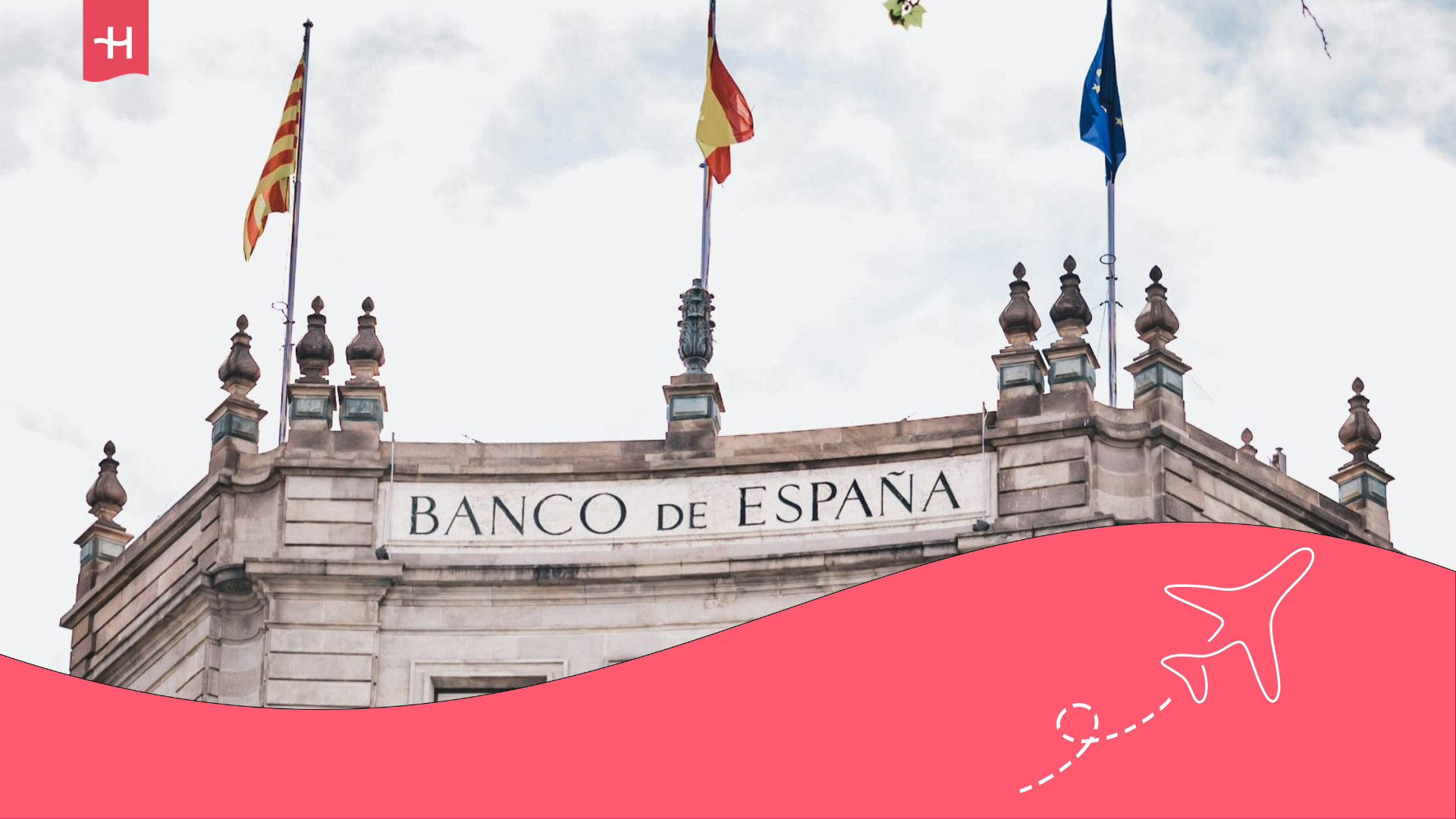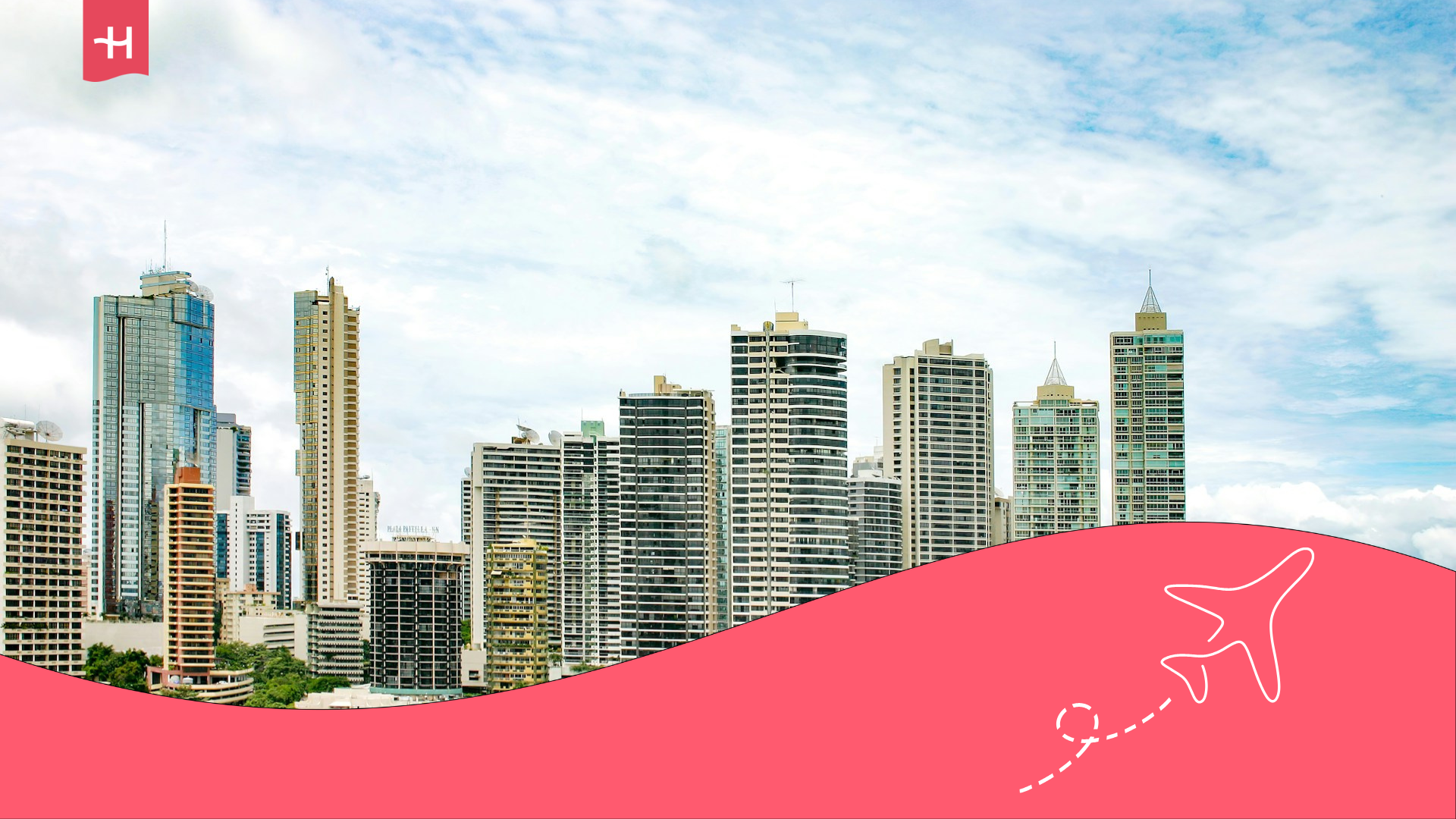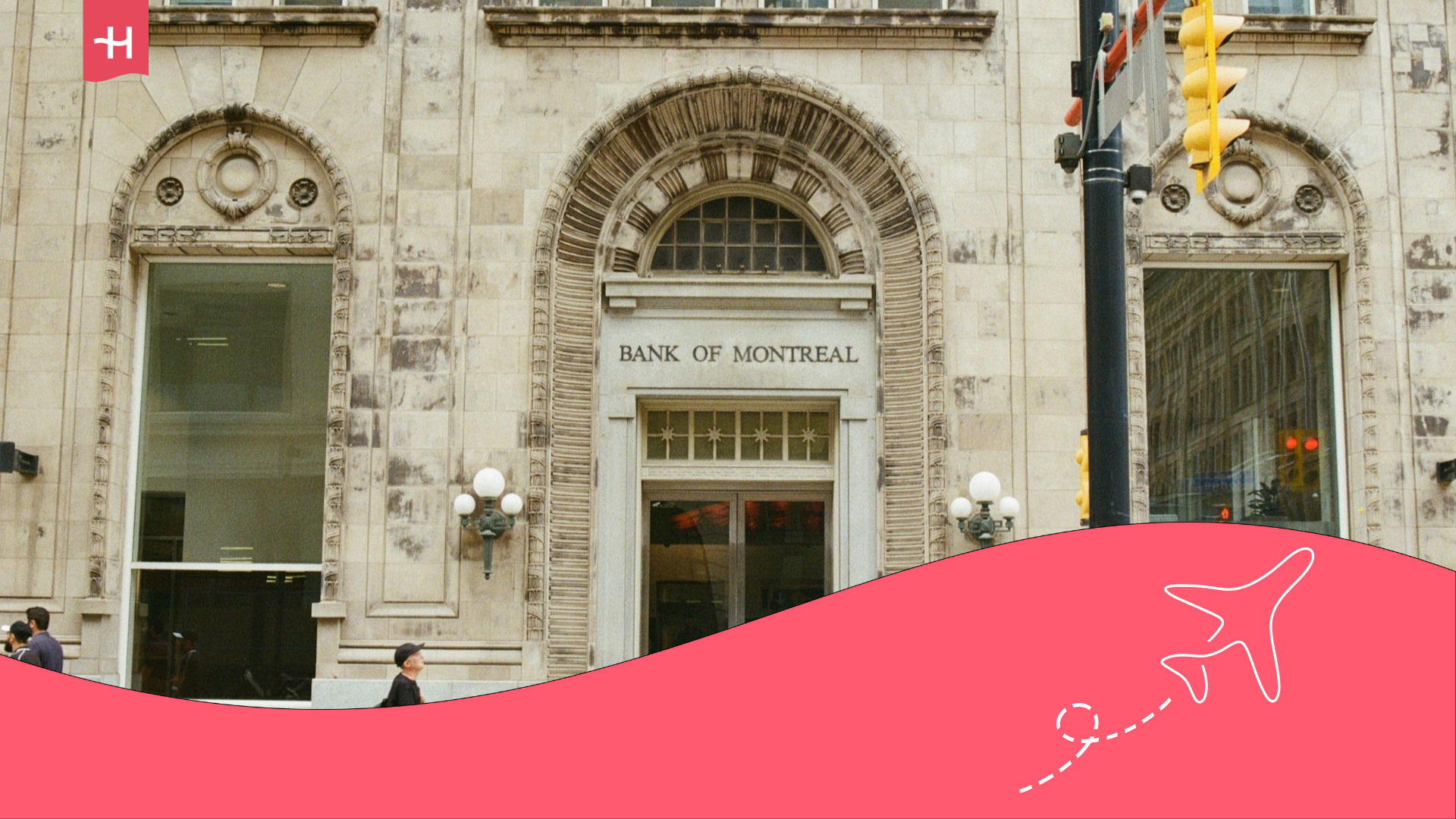Cost of living in China: Food, transport, and more
Planning to move to the Asian giant for a while or permanently? Then don't miss this guide to the cost of living in China.
China is a country of contrasts, and this also shows in its cost of living. Settling in central Shanghai, Beijing or Shenzhen differs greatly from living in mid-sized cities like Chengdu, Xi’an or Kunming, where prices are up to 40% lower. Still, for many foreigners, the cost of living in China feels affordable compared with other global destinations, especially if earning in strong currency.
Planning to move to the Asian giant but unsure how much money you’ll need monthly? Here at Holafly we’ve prepared a guide to help you plan a long stay, whether you’re a student, remote worker, digital nomad or expat. You’ll find cost estimates for housing, food, transport, healthcare, internet and leisure, with practical tips to adjust your budget to your lifestyle. Ready to begin?
How does housing impact the cost of living in China?
China has a huge, diverse housing market. You’ll find ultra-modern flats in Shanghai skyscrapers and simple homes in Chengdu. Prices vary depending on the city, district, property type and included services. Still, rent is the biggest monthly expense, though it’s cheaper than Europe or the United States.
Below, we’ll show the most common housing options for stays over a month and typical costs in Shanghai, Beijing and inland cities.
Studios or small flats
Studios are the favourite choice for solo travellers or couples. They’re small and functional, often in residential complexes with 24/7 security, shared laundry and public transport nearby.
Shanghai and Beijing have higher prices and smaller spaces. But in cities like Xi’an or Kunming, you’ll find comfortable studios at half the cost.
- Average monthly rent in big cities: €552–828 ($600–900)
- Average monthly rent in mid-sized cities: €322–460 ($350–500)
Coliving: Shared and modern spaces
China attracts digital nomads and remote workers, so coliving is expanding quickly, especially in Shenzhen, Hangzhou and Chengdu. Here, private rooms mix with shared areas: kitchen, laundry, coworking, fast WiFi and community events.
Brands like You+ International Youth Community and Mofang lead this market.
- Average monthly price: €368–€644 ($400–800) Includes internet, weekly cleaning, electricity, and water.
One or two-bedroom flats
If you want more privacy or travel as a couple, renting a furnished flat in residential districts is ideal. Complexes often include security, lifts, green spaces and metro connections. However, the more central the location, the higher the cost.
- One-bedroom in central Shanghai or Beijing: €828–1,196 ($900–1,300)
- One-bedroom in mid-sized cities or suburbs: €368–552 ($400–600)
- Two-bedrooms in big cities (mid-range areas): €1,104–1,472 ($1,200–1,600)
Airbnb stays (and local platforms)
In China, you can rent entire flats short-term via Airbnb or local platforms like Ziroom. Airbnb is popular among foreigners because listings in Shanghai and Beijing often include English instructions, self check-in and smooth communication. Ziroom is widely used by locals for long stays and has lower prices, but its app is mainly in Chinese, so you may need local help. Prices are lower than Airbnb, but the main disadvantage is that the app is in Chinese (although there is a partial English version), so you may need local help to manage the contract or understand the terms and conditions.
In addition to English-speaking customer service, Airbnb rentals generally include services such as weekly cleaning, WiFi, good location, and do not require long-term contracts or deposit payments.
- Average monthly Airbnb (long stay): €736–1,288 ($800–1,400)
Traditional housing: hutongs and siheyuan
Looking for a more local experience? In Beijing, you can rent rooms inside traditional houses called siheyuan (with central courtyard) or live in the famous hutongs, narrow alleys with preserved Chinese architecture. Many are restored for students, artists or remote workers seeking cultural immersion.
Most are located in historic districts like Dongcheng or Xicheng, near temples, markets and parks. The environment is intimate and community-focused, though with fewer comforts than modern buildings.
- Average monthly rent in a restored hutong: €460–€736 ($500–800)
- Includes: Private room, shared bathroom, common courtyard, basic furniture
- Best for: Mandarin students, foreigners interested in cultural immersion
Be careful: Not all hutongs are well maintained or suitable for long stays. It’s better to use specialised agencies or personal recommendations.
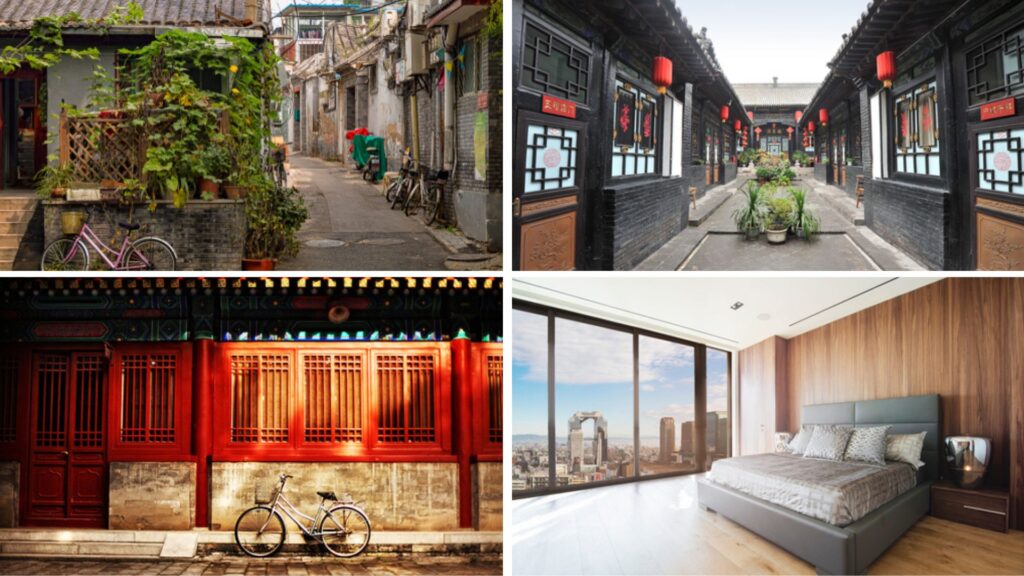
Is eating out in China expensive?
Eating out in China often costs less than cooking at home. The variety is massive: from traditional street stalls to business set menus in modern restaurants, usually for less than a Western meal at home. Local products are affordable (especially in markets), while imported goods (like dairy, European cereals or processed meats) often cost similar to Europe. Apps like Meituan or Ele.me let you order food or groceries straight from your phone.
For instance, making 12 jiaozi dumplings at home costs around €4.14–4.60 ($4.50–5.00). Eating them outside costs about €1.84–3.22 ($2.00–3.50) for the same portion.
To give you an idea of supermarket costs in China, here’s an updated June 2025 list. Remember, import shops like Ole or CitySuper often double the price.
| Basic product | Price (USD) | Price (€) |
|---|---|---|
| 1 litre of milk | $2.20 | €2.02 |
| 12 eggs | $2.50 | €2.30 |
| 1 kg rice | $1.20 | €1.10 |
| 1 kg chicken breast | $4.00 | €3.68 |
| 1 kg pork | $5.50 | €5.06 |
| Sliced bread (500 g) | $2.20 | €2.02 |
| 250 g ground coffee | $8.00 | €7.36 |
| 1 chocolate bar | $2.00 | €1.84 |
Food prices in China’s main supermarket chains
A monthly supermarket budget for one person ranges from €138–230 ($150–250), depending on local or imported goods. Cooking traditional Chinese meals is far cheaper than keeping a strict Western diet. Ingredients also come in larger portions, letting you cook several times weekly.
Eating out: from street baozi to luxury hotpot
One huge perk of living in China is that you can eat well and cheaply anytime. Big cities offer endless choices: night markets, Western brunch cafés, vegetarian buffets, Asian chains and hotpot restaurants. Here are reference prices:
| Type of Meal | Price (USD) | Price (€) |
|---|---|---|
| Street breakfast (baozi + tea) | $1.50 | €1.38 |
| Lunch in local restaurant | $3.00–6.00 | €2.76–5.52 |
| Dinner in mid-range restaurant | $7.00–12.00 | €6.44–11.04 |
| Dinner in international restaurant | $15.00–25.00 | €13.80–23.00 |
| Vegetarian or local buffet | $4.00–8.00 | €3.68–7.36 |
Cost of living in China: Eating out
Tip: Districts like Xuhui (Shanghai), Sanlitun (Beijing) or Zhujiang New Town (Guangzhou) are foodie hotspots with options for every budget.
The bottom line? If you adapt to local products and customs, food in China is surprisingly cheap and diverse. The real cost rises when sticking to a Western diet with imported goods.

Does transport raise the cost of living in China?
Not at all! One of China’s biggest advantages is its efficient and affordable transport system. From modern metros and electric buses to high-speed trains and ride-hailing apps, moving within and between cities is easy. Large cities like Shanghai, Beijing, Guangzhou and Chengdu have such extensive metro networks that living without a car is no issue. In smaller cities, taxis and shared bikes are more common.
The metro is the fastest, cheapest and most reliable option in big cities. You can pay with rechargeable cards (like Shanghai’s IC Card or Beijing’s Yikatong) or directly via WeChat or Alipay. Electric buses and metros are air-conditioned, often with English signs, making them another efficient choice.
Here’s an estimate of different transport costs in China:
| Transport type | Price (USD) | Price (€) |
|---|---|---|
| Metro ticket (short trip) | $0.50–0.80 | €0.46–0.74 |
| Urban bus ticket | $0.30–0.60 | €0.28–0.55 |
| Monthly metro pass (Shanghai) | $28.00 | €25.76 |
Cost of living in China: Transport prices
Ride apps: Didi, Meituan and taxis
China doesn’t have Uber or Lyft, but its own apps (Didi, Meituan, Gaode) work as well or better. You can order standard taxis, premium cars or even scooters. Typical costs are:
- Standard urban ride (5–6 km): €2.76–4.60 ($3.00–5.00)
Night ride or heavy traffic: €5.52–7.36 ($6.00–8.00)
Traditional taxi (starting fare): €2.02 ($2.20)
Shared bikes and e-scooters: Affordable ways to move around
A daily scene in China: thousands of shared bikes and e-bikes from Ofo, Hellobike, Meituan or Didi Bike. You unlock them with a QR code. They’re ideal for short trips, university campuses or avoiding traffic. The costs? Here’s an idea of prices:
| Mode | Price (USD) | Price (€) |
|---|---|---|
| Bike (per ride) | $0.15–0.30 | €0.14–0.28 |
| Unlimited monthly bike pass | $4.50–6.00 | €4.14–5.52 |
| E-scooter (20 minutes) | $1.00–1.50 | €0.92–1.38 |
Cost of renting bikes and e-scooters in China
Fuel, cars and intercity transport
Few foreigners own cars in large cities, but they can be useful in suburban areas or for travelling long distances. Here are typical costs:
| Category | Price (USD) | Price (€) |
|---|---|---|
| 1 litre of petrol | $1.20 | €1.10 |
| New car (Toyota Corolla type) | $17,000 | €15.640 |
| Basic monthly insurance | $60–90 | €55.20–82.80 |
Costs of owning a car in China
For intercity travel, high-speed trains (CRH) are punctual and affordable, often better value than driving.
- Shanghai – Hangzhou (170 km): €8.28–11.04 ($9.00–12.00)
- Beijing – Xi’an (1,200 km): €41.40–59.80 ($45.00–65.00)
China has one of the world’s most advanced transport systems. Moving within cities or across provinces is fast and cheap. In major cities, you won’t need a car at all.
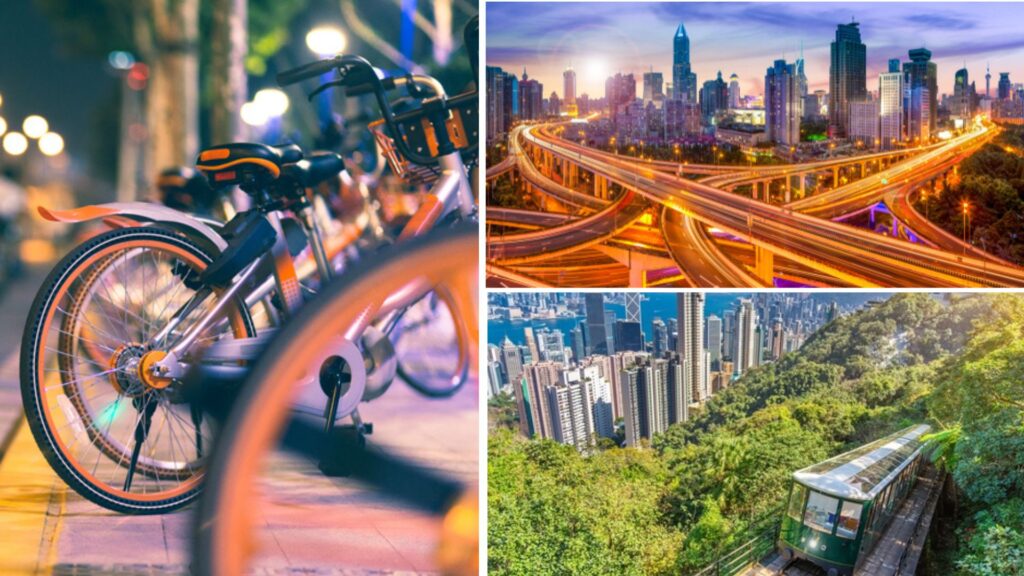
Is healthcare expensive in China?
When calculating the cost of living in China, we can’t ignore healthcare expenses. The country’s network is vast, mixing public hospitals, private clinics and international centres. Chinese citizens get partial public subsidies, but foreigners face a different reality: without private health insurance, you’ll need to pay upfront (and that can be costly). Still, the good news is that even private services usually cost less than in Europe or the US.
For example, a general consultation in a local hospital costs about €9.20–23.00 ($10–25), while a private hospital visit goes up to €32.20–55.20 ($35–60). A minor surgery, like appendicitis, can cost €2,300–3,680 ($2,500–4,000).
And what about language? Imagine explaining symptoms to a doctor who only speaks Mandarin. That’s often a barrier in local hospitals, but international hospitals in big cities provide English-speaking staff, faster service and greater comfort, though at higher prices.
Can foreigners access the public system? Yes, you can visit public hospitals, but without national health insurance you’ll pay full consultation fees. In most cases, you’ll need to bring your passport and pay at reception before the visit.
Private health insurance: key to control living costs in China
The best option for digital nomads, students or temporary workers is taking out international health insurance. Some universities and employers include it, but you can also purchase it independently. Prices aren’t too high, and it’s always worth the investment. Companies like Allianz Care, Cigna, SafetyWing or Ping An (local) offer plans for temporary residents.
| Type of cover | Monthly price (USD) | Price (€) |
|---|---|---|
| Basic insurance (consultations + emergencies) | $60–90 | €55.20–82.80 |
| Full insurance (surgery + hospitalisation) | $120–180 | €110.40–165.60 |
Healthcare insurance costs in China
How much do internet and mobile plans cost in China?
China has advanced tech infrastructure, with one of the world’s strongest mobile networks and 5G coverage almost nationwide. However, internet access is heavily restricted: many Western platforms like Google, Instagram, Facebook, WhatsApp and YouTube are blocked, so you’ll need a reliable VPN to browse freely.
There are three main providers: China Mobile, China Unicom and China Telecom. All offer competitive packages for residents, with affordable rates for both fixed broadband and mobile. Let’s see:
Cost of living in China: home broadband
Most contracts include speeds between 100 Mbps and 1000 Mbps. Prices vary by speed, area and whether you sign a yearly or monthly deal. Often, cable TV or a WiFi router is bundled. Installation is quick, but you may need local help if you don’t speak Chinese.
| Speed | Monthly price (USD) | Price (€) |
|---|---|---|
| 100 Mbps | $15.00 | €13.80 |
| 300 Mbps | $20.00 | €18.40 |
| 500–1000 Mbps (fibre) | $25.00–35.00 | €23.00–32.20 |
Home broadband costs in China
Mobile data and call plans
Mobile plans combine national minutes, 4G or 5G data and extras like access to WeChat or Chinese streaming (iQIYI). With a passport, you can sign a local monthly contract and SIM card. Most foreigners prefer China Unicom, thanks to reliable national coverage and English support.
| Plan type | Monthly price (USD) | Price (€) |
|---|---|---|
| 10 GB + 500 min | $7.00 | €6.44 |
| 30 GB + 1000 min | $10.00 | €9.20 |
| 100 GB + unlimited calls | $18.00–22.00 | €16.56–20.24 |
Mobile plan prices in China
Want no hassle? Get a monthly Holafly plan
If you’ve just arrived in China or you’ll travel across Asia, one of the best options is using an international eSIM with unlimited data, like the Holafly monthly plans. If you don’t need much data, you can choose 10 GB or 25 GB and also enjoy global coverage (over 160 countries). It all depends on your needs! You don’t need a Chinese passport or local address, and you’ll connect right after landing.
Important: If you are a frequent traveler and want to stay connected without worrying about expensive roaming or looking for a new SIM or pocket WIFi for China, Holafly’s subscription plans are for you. With a single eSIM, enjoy internet in more than 160 countries for a fixed price and no surprises on your bill. Travel without limits and connect easily and securely! 🚀🌍

How does leisure affect the cost of living?
China overflows with history, culture, art and nature. Its vast land offers deserts, snowy mountains, tropical beaches and red-stone canyons. Each city also provides unique leisure: tai chi in public parks, Chinese opera, street food fairs or ancestral festivals still alive today.
China holds some of the world’s most visited wonders, such as the Great Wall, the Forbidden City, the Terracotta Army in Xi’an, the karst rivers in Guilin and Yangshuo, and Shanxi’s Hanging Temples. Modern cities like Shanghai or Shenzhen showcase futuristic theme parks, interactive skyscrapers and immersive shopping malls.
For residents or long-term visitors, daily entertainment is cheap. Cinema, karaoke or amusement parks cost less than in Europe or America, although tickets for historic sites or nature reserves vary depending on location and attraction type.
10 free attractions in China
While many iconic landmarks require tickets, countless cultural, artistic and recreational experiences remain completely free. Here’s a top 10 of free activities in China that you can enjoy without opening your wallet:
- Temple of Heaven Park (Beijing – outer areas): Entry to the main temple costs, but Tiantan Park gardens are free at dawn. Hundreds practise tai chi, play chess or dance here.
- Jing’an Temple (Shanghai – exterior): No ticket needed to admire the golden façade of this Buddhist temple. The outer courtyard and architecture are free to explore.
- Li River walk (Yangshuo – open section): The most scenic stretch lies between Guilin and Yangshuo. While cruises cost, riverside walks with karst views are free.
- Shanghai Bund: China’s most famous riverside promenade offers free views of Pudong’s skyline and colonial buildings. Perfect for strolling day or night.
- Renmin Park (Chengdu): A green hub where locals play mahjong, relax in teahouses and socialise. Entry is free, right in central Chengdu.
- 798 Art District (Beijing): A former industrial site turned art hub, free to walk with murals, outdoor galleries and design shops. Only some halls charge.
- Confucius Temple (Guangzhou – free admission): Less touristy than the one in Beijing, this temple is a quiet oasis in the city. You can explore the courtyards, gardens and pavilions without paying an entrance fee, making it ideal for a peaceful cultural stroll.
- Xi’an City Wall (outer area): Walking atop costs, but exploring plazas and main gates like South Gate is free, offering history and architecture.
- West Lake (Hangzhou): A Chinese tourism classic. Vast lake surrounded by gardens, stone bridges and pagodas, completely free to enter.
- Shanghai Museum: Located in People’s Square, one of Asia’s top museums offers free entry. It has 11 halls of porcelain, bronze, calligraphy and ethnic art.

Paid tourist attractions: history, culture and landscapes worth every penny
Although many places are free, some attractions truly justify their entry fees. Whether for history, natural beauty or cultural value, these landmarks are essential to any visit or stay in China. From imperial palaces to ancient wonders, they reveal the country’s soul.
Prices vary by season, student or resident discounts and location. Here’s a summary of common ticket costs for foreign tourists:
| Attraction | City | Price (USD) | Price (€) |
|---|---|---|---|
| Forbidden City | Beijing | $10.00 | €9.20 |
| Great Wall (Badaling) | Beijing | $6.50 | €6.00 |
| Terracotta Warriors | Xi’an | $20.00 | €18.40 |
| Summer Palace Museum | Beijing | $5.50 | €5.06 |
| Mogao Caves | Gansu | $23.00 | €21.16 |
| Zhangjiajie National Park | Hunan | $25.00 | €23.00 |
| Humble Administrator’s Garden | Suzhou | $6.00 | €5.52 |
| Shanghai Museum (temporary exhibitions) | Shanghai | $8.00 | €7.36 |
| Leshan Giant Buddha | Sichuan | $10.00 | €9.20 |
| Shaolin Temple | Henan | $15.00 | €13.80 |
Cost of living in China: Main tourist attraction prices
Is the cost of living in China high?
Living in China can be as affordable or as expensive as you choose. Cities like Beijing or Shanghai have prices comparable to major Western capitals, yet they still offer significant advantages: cheap transport, affordable food, quality healthcare and endless free activities. In cities such as Chengdu, Xi’an or Hangzhou, the cost of living is considerably lower without losing comfort or quality of life.
The key lies in adapting to local habits: eating in markets, using the metro, renting outside premium districts and taking advantage of free cultural events. If you are a digital nomad, student or simply want to explore a new lifestyle, China remains one of the most fascinating, diverse and surprising destinations to live in 2025.





 Language
Language 


















 No results found
No results found





